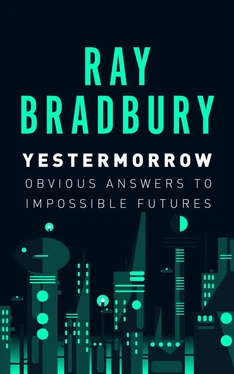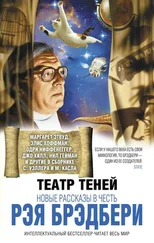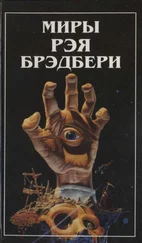Simultaneously, in France, the magician-become-cinema illusionist George Melies was popping rabbit films out of hats, full of Verne/Wells imagery, alive with architecture, impossible beasts, moon landscapes, and a pomegranate imagination that refused to sit still. If Melies influenced McCay or if McCay influenced Melies, I do not know. They are twins, racing down the same genetic track, so devastatingly full of the life-force that they knock everyone head over heels before them.
The histories of cinema and comic strips parallel each other on similar rail tracks, speeding up on through our century, rushing over mile-high viaducts, racing toward our elusive tomorrows.
The combination of all these metaphorical art forms, comic strips, magazine covers, magical films of the early twentieth century, and the World’s Fairs in between, have produced the architectural science fiction films of the last twenty years.
Architectural science fiction films?
I use the description because these films have rebuilt our concepts of the future. They are the manifestations of the words of science fiction and the architecture of our dreams.
2001 for starters. Next the big artillery that knocked us flat out: Close Encounters of the Third Kind , Star Wars , The Empire Strikes Back , and the charming Star Trek II, III and IV.
Long before them, there were Metropolis and Things to Come , echoing and presaging the wild fancies of Frank Lloyd Wright and the unrealized blueprints of Norman Bel Geddes.
The unbuilt visions of lost architectural genius have at last been raised from the graveyard sands and reared on 50-foot-high and 90-foot-wide screens by today’s production designers and science fiction illustrators.
It was the cities we went to see.
Let us face it: In the final moments of Close Encounters , that is not—I repeat, not—a Mother Ship that drifts down from the universe. It is an entire country, a land put up in a massive architectural pod, so irresistible that, in hearing its five Pied Piper notes played again and again, the children of the world, myself included, rushed across the tarmac in our minds to get aboard and go away forever.
Such is the pull of futures riveted together as cities that pretend to be ships.
In The Empire Strikes Back , more cities, more architecture. What is the Emerald City doing, suspended on its own platform in a weird skyscraper, waiting for our seekers?
And, again…
Why do we go back to see 2001 over and over and over? Surely not for its one-track acting and baffling finale. We return to it because the very possibility of its interpretations frees us to carom off into the greatest of all architecture: the universe itself.
Who will ever forget their first cinematic trip into the unknown universe? The first sighting of that immense city-ship adrift to Strauss waltzes on the first night of viewing 2001 ?
Or that first thunderous explosion of a Star Wars rocket blasting across the stars? The night I heard it, a thousand people gasped with shock, knocked in the pits of their stomachs. The glad cry that followed the shock was like the city of a thousand babes slapped into life: pure joy at the sound of the future.
I am reminded of an article I wrote for a major magazine a few years back. The magazine hated the aesthetic concept of my article so much that they paid me off and trashed the piece. What had I said that knocked their wigs askew?
I simply pointed out that science fiction and science fiction art were revolutionizing the world of the museum, the gallery, the concert hall, the cinema, and all or most of fiction.
The cultural impact of your average science fiction film made kids wandering into art galleries wonder where all the metaphors were. They found instead drip-dry, cross-hatched, and empty canvases, bereft of any romance, poetry, image, or so much as one half of a dog-eared haiku symbol. If the cinema screens could flood their minds with such vivid portraits of imagined dreams, why not the art galleries?
From the imaginative film came the inevitable bleed-over and discovery of such illustrators as Rackham, Dulac, Grandville, Dore and the Victorian pre-Raphaelite painters. All because kids ran off to 2001 and fell from a thousand-story building, into the past as well as the future.
So the new-old clichés of the abstract and super-abstract revolution were cut across at their nonexistent knees by a riot of heretofore uninformed teenaged art critics who demanded story, symbol, and the reinvention of tale telling.
What fragmented the art galleries soon knocked a few orchestra conductors off their podiums. What started as a hum-along with the Strausses through two hours of 2001 prolonged itself into science fictional symphonies with Berlioz, Vivaldi, and a half-dozen others. The kids in their bright ignorance stumbled out of John Williams’ score for Star Wars into The Four Seasons and Symphonie Fantastique. One helluva way, the aesthetes protested, to be educated to their finer impulse.
What, after all, did these damn-fool kids know about art?
Almost, you might say, everything.
They knew that life without image or metaphor is empty and meaningless. Hell, they said, you can learn from the Bible. Witness Daniel in that old lions’ den. Once the cage doors slam and lions roar, you never forget that, do you? Well, then, in this age of machines that embody all the metaphors of man’s dreaming in the last one hundred years, how come the galleries are empty of concept, vacuumed free of one lint-thread of idea, long lost from dream? You do not go to visit an elevator shaft with no elevator in it, do you? Better one bottomed out in trash, if necessary, as long as you, in the finale, are lifted.
Well, if I have beaten the dead thoat a dozen times too many, forgive. Not all of our teachers, our intellectuals, our movers and shakers, have yet discovered that this is the greatest age of metaphor, because the metaphors have peeled off the canvases, marched out of the haunted World’s Fair grounds, leaped out of the comic strips, and unreeled themselves from cinema screens and computer tapes to become our whole existences, our lives, our further dreams. The artistic haiku of just the other morning has become the logarithm written to displace the astrological houses above us.
If educators and parents only truly understood, our children today are all quasars, galaxies, black holes, laser discs, and rocket-submarines built to submerge and swim in Jupiter’s soups. The architecture of the future is the substance of their dreams, fed by some of the best-wishing artists, authors, and architects.
We are all kin to the Gustave Dore and John Martin landscapes that caused the roustabout sorcerer Melies to film his secret moon, and Winsor McCay to walk his small boy Nemo upside down through inverted boulevards, and cause yet further films to be built around that grand door and wall and the huge skull on Kong’s island. Ending at last with the birth of Spielberg and Lucas, who picked up the bottle marked Drink Me— inside of which was the whole history of magazines, comics, science fiction covers, nineteenth-century painters and etchers—and drank the whole damn thing until the founts of Technicolor squirted out their ears.
The worst, you might be tempted to say, is yet to come. Yes, but the best also, I say. Why not the best? Science fiction remains the architecture of our dreams, and science fiction illustration will continue to inspire our next generation of dreamers.
1987
THE GIRLS WALK THIS WAY; THE BOYS WALK THAT WAY
An Essay Written in 1970 To Dream the Future, Long Before Most American Malls Were Built
In Mexico, in any small-town plaza every Thursday and Sunday night with the band playing and the weather mild, the boys walk this way, the girls walk that, around and around, and the mothers and fathers sit on iron-scrolled benches and watch. In Paris, with miserable weather, in thousands of outdoor drinking and eating places, the generations gather to talk and stare. Even this late in the century in many crossroads-country-junction American towns, Saturday night finds pumpkin boys rolling in from the farms to hold up cigar storefronts with their shoulders and paw the sidewalk with their hooves as the girls go laughing by. Which is what life is all about. Gathering and staring is one of the great pastimes in the countries of the world. But not in Los Angeles. We have forgotten how to gather. So we have forgotten how to stare. And we forgot not because we wanted to, but because, by fluke or plan, we were pushed off the familiar sidewalks or banned from the old places. Change crept up on us as we slept. We are lemmings in motion now, with nowhere to go. How did we lose it all? How can we bring it back? Can’t we imitate the Latins who have enough sense to make a town plaza work for them? Can’t we be like those boys and girls who gather in far towns where the Iowa dust blows through like talcum powder on the air, following the ghosts of ancient locomotives? Well, I have a plan for a whole city block where we might meet as in the old days, and walk and shop and sit and talk and simply stare. And, finally, not just one block. But 80 or 90 city blocks spread over the entire freeway-junket-run of all 80 or 90 of the separate lonely Ohio-Illinois-Kansas-style towns, which is what Los Angeles truly is. But to show you my L.A. tomorrow, I must first show you what L.A. was when I grew up here. In the thirties, with TV unborn, you listened to radio or walked to the movies. Who could afford a car? No one. And, going to the movies, you stopped at the sweet shop next door for candy and popcorn, and after the show you came back to the same sweet shop for a malt or the corner drugstore for a Coke, and you lolled at those soda fountains until midnight with all your friends. For, you see, in those days there was a microscopic community in every neighborhood: the theater, the sweet shop, the drugstore fountain. Your friends? Why, they were always there! Well, that dear drugstore and its hissing fount, through economics, has vanished. The few that are left have no fountains at all. The few with fountains close at six each night. The sweet shop? That was shot dead when theaters installed their own lobby popcorn and candy stalls. So, there go two of your most important social halls. Today, 30 years later, as if by proclamation, we have all been told: Move On! So we climb in our cars. We drive… and drive… and drive… and come home blind with exhaustion. We have seen nothing, nor have we been seen. Our total experience? Six waved hands, a thousand blurred faces, seventeen Volkswagen rears and some ripe curses from a Porsche and an MG behind. And when we do occasionally get somewhere, the Strip, or Hollywood Boulevard, what do we find? Ten thousand other Dante’s Inferno Souls, locked in immovable ice floes ahead, irritably inhaling their exhausts, unwanted by themselves and the traffic police. So the exasperated madness and the inhumanity grow.
Читать дальше











